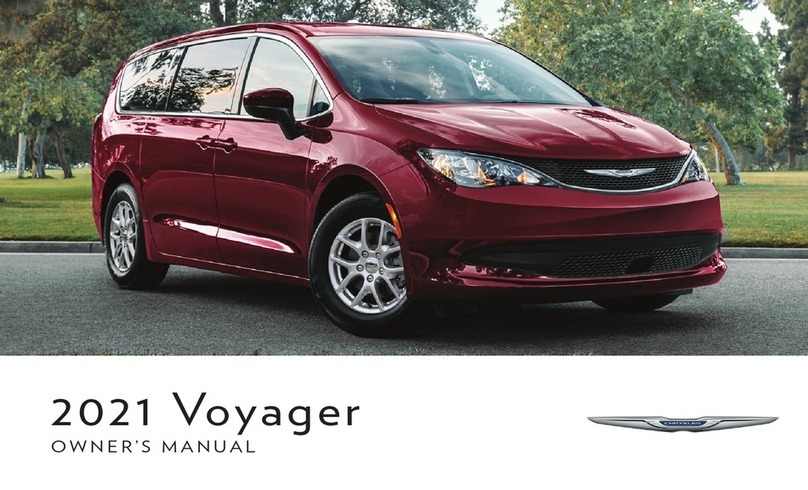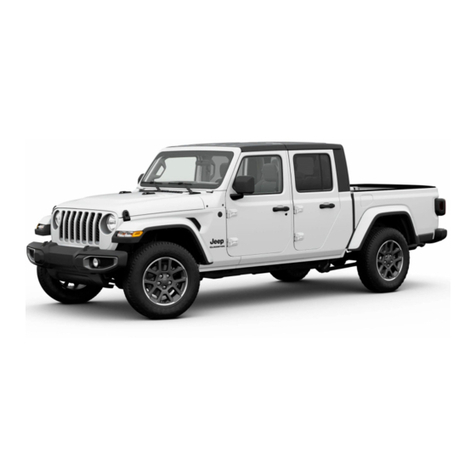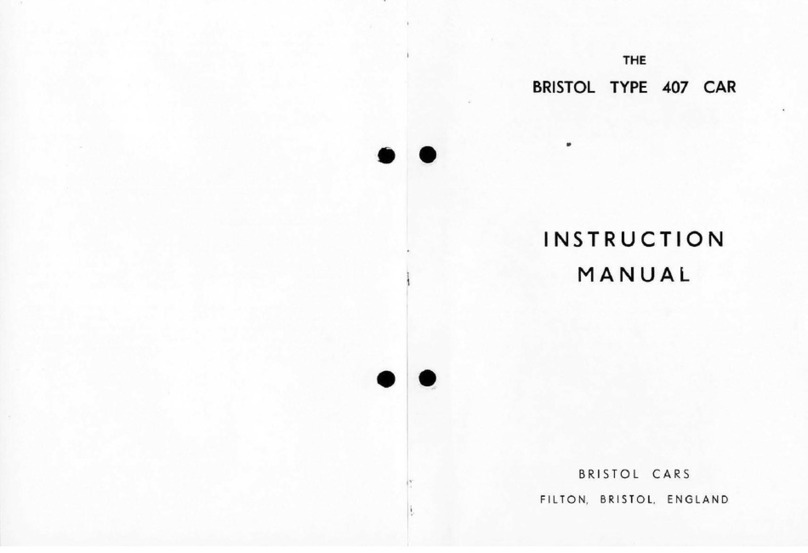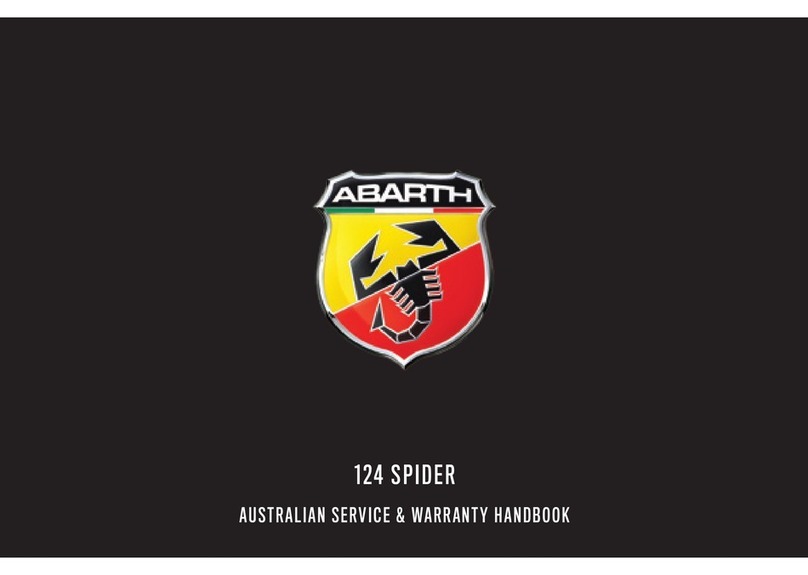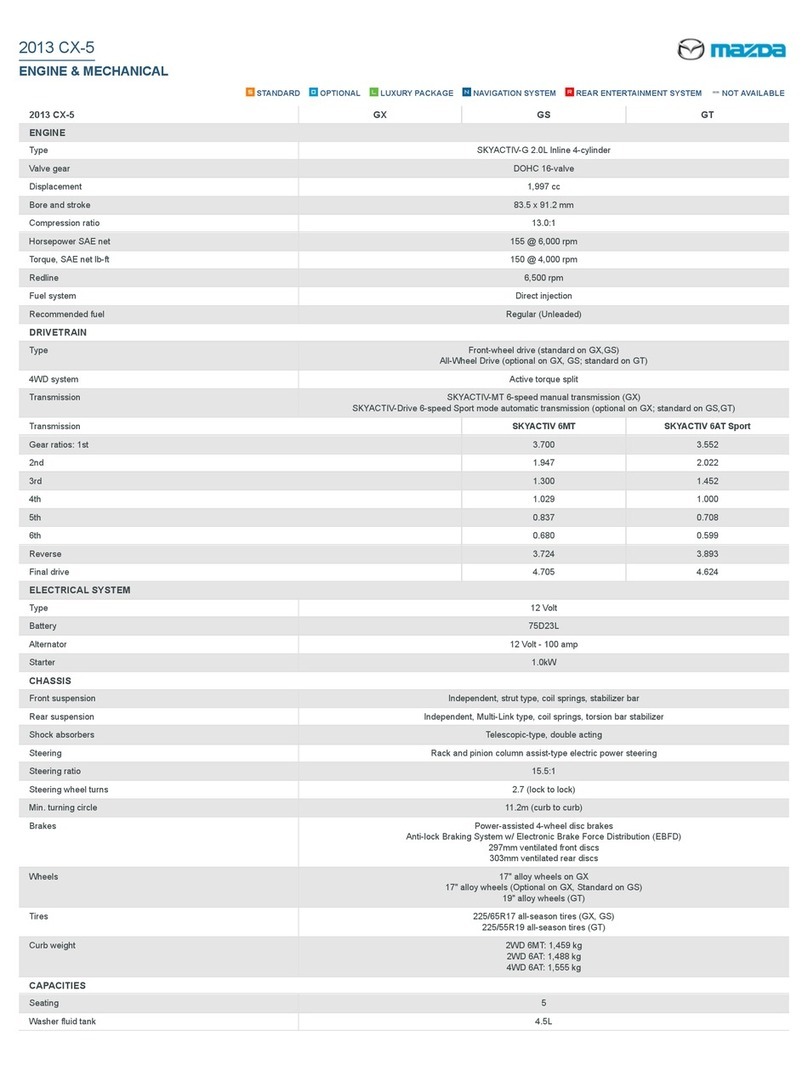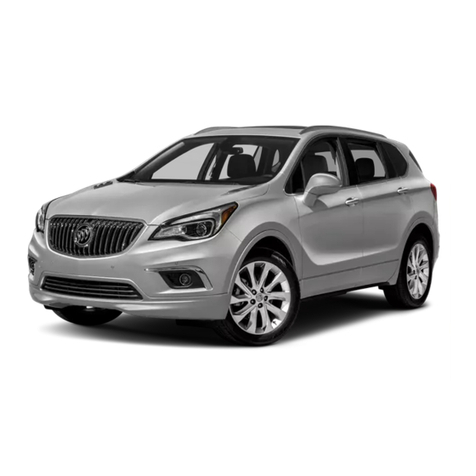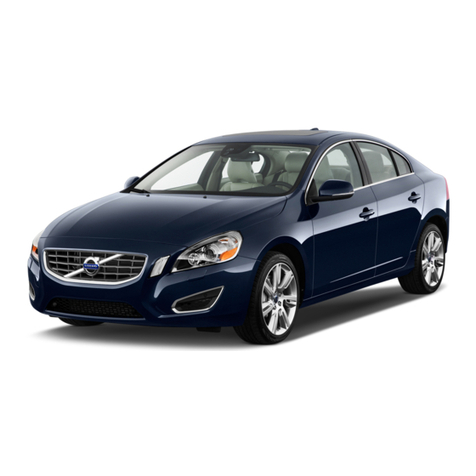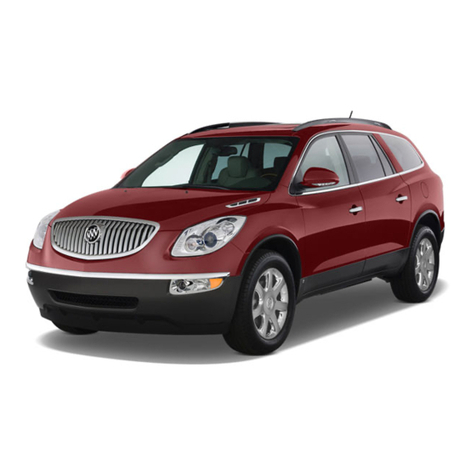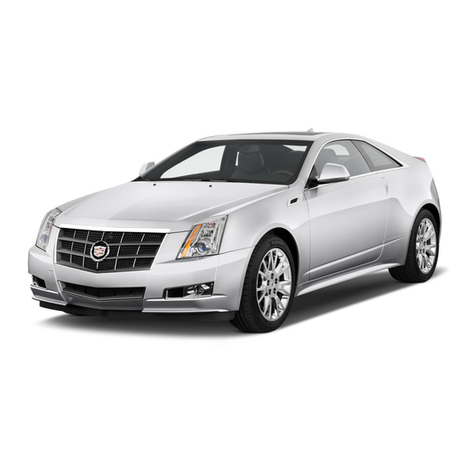FCA US DODGE JOURNEY 2020 User manual

20_JC_OM_EN_USC
FIRST EDITION
2020 DODGE JOURNEY OWNER’S MANUAL
2020 DODGE JOURNEY
©2019 FCA US LLC. ALL RIGHTS RESERVED. TOUS DROITS RÉSERVÉS.
DODGE IS A REGISTERED TRADEMARK OF FCA US LLC OR FCA CANADA INC., USED UNDER LICENSE. DODGE EST UNE MARQUE DÉPOSÉE DE FCA US LLC OU FCA CANADA INC., UTILISÉE SOUS LE PERMIS.
APP STORE IS A REGISTERED TRADEMARK OF APPLE INC. GOOGLE PLAY STORE IS A REGISTERED TRADEMARK OF GOOGLE.
Whether it’s providing information about specic product features, taking a tour through your vehicle’s heritage, knowing what steps to take following an
accident or scheduling your next appointment, we know you’ll nd the app an important extension of your Dodge brand vehicle.
Simply download the app, select your make and model and enjoy the ride. To get this app, go directly to the App Store®or Google Play®Store and enter the search
keyword “Dodge” (U.S. residents only).
mopar.com/om owners.mopar.ca
DOWNLOAD A FREE ELECTRONIC COPY OF THE MOST UP-TO-DATE
OWNER’S MANUAL, UCONNECT AND WARRANTY BOOKLETS
U. S. Canada

WARNING: Operating, servicing and maintaining a passenger vehicle or off-highway motor vehicle can expose you to
chemicals including engine exhaust, carbon monoxide, phthalates, and lead, which are known to the State of California to
cause cancer and birth defects or other reproductive harm. To minimize exposure, avoid breathing exhaust, do not idle the
engine except as necessary, service your vehicle in a well-ventilated area and wear gloves or wash your hands frequently
when servicing your vehicle. For more information go to www.P65Warnings.ca.gov/passenger-vehicle.
This Owner’s Manual illustrates and describes the operation of features and equipment that are either standard or optional on this vehicle. This manual may also include
a description of features and equipment that are no longer available or were not ordered on this vehicle. Please disregard any features and equipment described in this
manual that are not on this vehicle. FCA US LLC reserves the right to make changes in design and specications, and/or make additions to or improvements to its
products without imposing any obligation upon itself to install them on products previously manufactured.
With respect to any vehicles sold in Canada, the name FCA US LLC shall be deemed to be deleted and the name FCA Canada Inc. used in substitution therefore.
If you are the rst registered retail owner of your vehicle, you may obtain a complimentary printed copy of the Warranty Booklet by calling 1-800-423-6343 (U.S.) or
1-800-387-1143 (Canada) or by contacting your dealer.
This Owner’s Manual is intended to familiarize you with the important features of your vehicle. Your most up-to-date Owner’s Manual, Navigation/Uconnect manuals and
Warranty Booklet can be found by visiting the website on the back cover. U.S. residents can purchase replacement kits by visiting www.techauthority.com and Canadian
residents can purchase replacement kits by calling 1-800-387-1143.
The driver’s primary responsibility is the safe operation of the vehicle. Driving while distracted can result in loss of vehicle control, resulting in an accident and
personal injury. FCA US LLC strongly recommends that the driver use extreme caution when using any device or feature that may take their attention off the road.
Use of any electrical devices, such as cellular telephones, computers, portable radios, vehicle navigation or other devices, by the driver while the vehicle is moving
is dangerous and could lead to a serious accident. Texting while driving is also dangerous and should never be done while the vehicle is moving. If you nd yourself
unable to devote your full attention to vehicle operation, pull off the road to a safe location and stop your vehicle. Some states or provinces prohibit the use of
cellular telephones or texting while driving. It is always the driver’s responsibility to comply with all local laws.
This Owner’s Manual has been prepared to help you get acquainted with your new Dodge brand vehicle and to provide a convenient reference source
for common questions.
Not all features shown in this manual may apply to your vehicle. For additional information, visit www.mopar.com (U.S.), www.mopar.ca (Canada) or your local
Dodge brand dealer.
Drunk driving is one of the most frequent causes of accidents. Your driving ability can be seriously impaired with blood alcohol levels
far below the legal minimum. If you are drinking, don’t drive. Ride with a designated non-drinking driver, call a cab, a friend or use
public transportation.
DRIVING AND ALCOHOL
Driving after drinking can lead to an accident. Your perceptions are less sharp, your reexes are slower and your judgment is impaired
when you have been drinking. Never drink and then drive.
WARNING

TABLE OF CONTENTS
1
2
3
4
5
6
7
8
9
10
11
1 INTRODUCTION ............................................................................................................................. 7
2 GETTING TO KNOW YOUR VEHICLE ...................................................................................9
3 GETTING TO KNOW YOUR INSTRUMENT PANEL ....................................................... 95
4 SAFETY .......................................................................................................................................... 112
5 STARTING AND OPERATING ................................................................................................161
6 IN CASE OF EMERGENCY .....................................................................................................194
7 SERVICING AND MAINTENANCE ....................................................................................... 221
8 TECHNICAL SPECIFICATIONS ............................................................................................ 262
9 MULTIMEDIA ............................................................................................................................... 271
10 CUSTOMER ASSISTANCE .....................................................................................................386
11 INDEX .............................................................................................................................................390
20_JC_OM_EN_USC_t.book Page 1

2
INTRODUCTION
HOW TO USE THIS MANUAL..................................8
Essential Information .................................... 8
Symbols.......................................................... 8
WARNINGS AND CAUTIONS .................................8
VEHICLE MODIFICATIONS/ALTERATIONS...........8
GETTING TO KNOW YOUR VEHICLE
KEYS ........................................................................ 9
Key Fob........................................................... 9
IGNITION SWITCH .................................................12
Keyless Push Button Ignition......................12
Ignition Or Accessory On Message ............14
REMOTE START — IF EQUIPPED .........................14
How To Use Remote Start ...........................14
Remote Start Abort Message......................15
To Enter Remote Start Mode ......................15
To Exit Remote Start Mode Without
Driving The Vehicle .....................................15
To Exit Remote Start Mode And Drive The
Vehicle .......................................................... 16
Remote Start Comfort Systems
— If Equipped ...............................................16
General Information ....................................16
SENTRY KEY .........................................................17
Key Programming .......................................17
Replacement Keys....................................... 17
General Information ....................................18
VEHICLE SECURITY ALARM — IF EQUIPPED .... 18
To Arm The System...................................... 18
To Disarm The System ................................ 19
Rearming Of The System............................. 19
Security System Manual Override .............. 19
Tamper Alert.................................................19
DOORS .................................................................. 20
Manual Door Locks...................................... 20
Power Door Locks ....................................... 20
Keyless Enter-N-Go — Passive Entry
(If Equipped) ................................................ 21
Child-Protection Door Lock System
— Rear Doors ............................................... 24
SEATS .................................................................... 25
Manual Adjustment (Front Seats) .............. 26
Manual Adjustment (Rear Seats) ............... 27
Power Adjustment (Front Seat)................... 31
Front Heated Seats — If Equipped.............. 32
Seatback/Armrest — Second Row
Passenger Seat............................................ 33
HEAD RESTRAINTS.............................................. 34
Supplemental Active Head Restraints
(AHR) — Front Seats..................................... 34
Rear Head Restraint Adjustment................ 35
Rear Head Restraint Removal.................... 36
STEERING WHEEL ................................................ 36
Tilt/Telescoping Steering Column .............. 36
Heated Steering Wheel — If Equipped ...... 37
MIRRORS ..............................................................37
Inside Day/Night Mirror — If Equipped....... 37
Automatic Dimming Mirror
— If Equipped .............................................. 38
Automatic Dimming Mirror With Rear
View Camera Display — If Equipped .......... 39
Outside Mirrors ........................................... 39
Interior Observation Mirror ........................ 40
Power Mirrors............................................... 40
Heated Mirrors — If Equipped..................... 40
Power Folding Mirrors — If Equipped ......... 41
Illuminated Vanity Mirrors
— If Equipped .............................................. 41
EXTERIOR LIGHTS.................................................42
Multifunction Lever ..................................... 42
Headlights.................................................... 42
Daytime Running Lights (DRLs).................. 42
High/Low Beam Switch............................... 42
Flash-To-Pass............................................... 42
Automatic Headlights ................................. 43
Headlights On With Wipers
(Available With Automatic
Headlights Only) .......................................... 43
Headlight Time Delay ................................. 43
Lights-On Reminder..................................... 43
Fog Lights — If Equipped............................. 44
Turn Signals ................................................ 44
Lane Change Assist — If Equipped ............. 44
20_JC_OM_EN_USC_t.book Page 2

3
INTERIOR LIGHTS .................................................44
Courtesy/Interior Lighting ..........................44
WIPERS AND WASHERS ....................................46
Windshield Wiper Operation .......................46
Rear Window Wiper/Washer ......................48
CLIMATE CONTROLS ...........................................48
Manual Climate Control Overview ..............49
Automatic Climate Controls Overview ........60
Climate Control Functions...........................71
Automatic Temperature Control (ATC)
— If Equipped ...............................................72
Operating Tips .............................................73
WINDOWS ............................................................74
Power Windows ...........................................74
Wind Buffeting ............................................76
POWER SUNROOF — IF EQUIPPED.....................76
Opening Sunroof..........................................77
Closing Sunroof............................................ 77
Wind Buffeting .............................................77
Sunshade Operation....................................77
Anti Pinch Protect Feature .......................... 77
Sunroof Maintenance..................................77
Ignition Off Operation ..................................77
HOOD......................................................................78
Opening ........................................................ 78
Closing .......................................................... 78
LIFTGATE................................................................79
Opening ........................................................ 79
Cargo Area Features ...................................79
GARAGE DOOR OPENER — IF EQUIPPED ......... 82
Before You Begin Programming
HomeLink®.................................................. 82
Canadian/Gate Operator Programming..... 84
Using HomeLink®........................................ 85
Security......................................................... 85
Troubleshooting Tips ................................... 86
General Information .................................... 86
INTERNAL EQUIPMENT........................................ 87
Storage......................................................... 87
Cupholders .................................................. 89
Power Outlets...............................................89
Power Inverter — If Equipped .....................91
Sunglasses Storage .................................... 92
ROOF LUGGAGE RACK — IF EQUIPPED ............ 93
GETTING TO KNOW YOUR INSTRUMENT PANEL
INSTRUMENT CLUSTER ....................................... 95
Instrument Cluster Descriptions................. 96
INSTRUMENT CLUSTER DISPLAY....................... 97
Instrument Cluster Display Location And
Controls ........................................................ 97
Oil Change Due ........................................... 98
Instrument Cluster Display Selectable
Menu Items.................................................. 98
Battery Saver On/Battery Saver Mode
Message — Electrical Load Reduction
Actions — If Equipped ...............................101
WARNING LIGHTS AND MESSAGES ............... 102
Red Warning Lights ...................................102
Yellow Warning Lights ...............................105
Green Indicator Lights...............................108
White Indicator Lights ...............................109
Blue Indicator Lights .................................109
ONBOARD DIAGNOSTIC SYSTEM — OBD II .... 109
Onboard Diagnostic System (OBD II)
Cybersecurity .............................................110
EMISSIONS INSPECTION AND
MAINTENANCE PROGRAMS............................. 110
SAFETY
SAFETY FEATURES ............................................ 112
Anti-Lock Brake System (ABS) .................112
Electronic Brake Control (EBC) System....113
AUXILIARY DRIVING SYSTEMS ........................ 119
Tire Pressure Monitoring System
(TPMS)........................................................119
OCCUPANT RESTRAINT SYSTEMS .................. 124
Occupant Restraint Systems Features ....124
Important Safety Precautions...................124
Seat Belt Systems ....................................125
Supplemental Restraint Systems (SRS)...133
Child Restraints .........................................143
Transporting Pets .....................................158
20_JC_OM_EN_USC_t.book Page 3

4
SAFETY TIPS ...................................................... 158
Transporting Passengers ..........................158
Exhaust Gas ...............................................158
Safety Checks You Should Make
Inside The Vehicle .....................................159
Periodic Safety Checks You Should
Make Outside The Vehicle ........................160
STARTING AND OPERATING
STARTING THE ENGINE .................................... 161
Automatic Transmission ...........................161
Normal Starting .........................................161
Keyless Enter-N-Go — Ignition...................163
Cold Weather Operation
(Below –22°F Or −30°C) .........................163
If Engine Fails To Start ..............................163
After Starting..............................................163
ENGINE BLOCK HEATER — IF EQUIPPED........ 163
ENGINE BREAK-IN RECOMMENDATIONS ...... 164
PARKING BRAKE .............................................. 164
AUTOMATIC TRANSMISSION............................ 166
Ignition Park Interlock ...............................166
Brake/Transmission Shift Interlock
System .......................................................166
Four-Speed Automatic Transmission .......167
Gear Ranges .............................................167
POWER STEERING............................................. 172
Power Steering Fluid Check ......................172
SPEED CONTROL — IF EQUIPPED ...................173
To Activate..................................................173
To Set A Desired Speed.............................173
To Vary The Speed Setting........................173
To Accelerate For Passing.........................174
To Resume Speed .....................................174
To Deactivate.............................................174
PARKSENSE REAR PARK ASSIST ...................175
ParkSense Sensors ...................................175
ParkSense Display.....................................175
ParkSense Warning Display......................177
Enabling And Disabling ParkSense ..........177
Service The ParkSense Rear Park
Assist System.............................................178
Cleaning The ParkSense System..............178
ParkSense System Usage Precautions....178
PARKVIEW REAR BACK UP CAMERA..............179
REFUELING THE VEHICLE..................................181
Loose Fuel Filler Cap Message.................181
VEHICLE LOADING ............................................182
Vehicle Certification Label ........................182
Gross Vehicle Weight Rating (GVWR).......182
Gross Axle Weight Rating (GAWR) ...........182
Overloading................................................182
Loading ......................................................183
TRAILER TOWING .............................................. 183
Common Towing Definitions.....................183
Trailer Hitch Classification ........................185
Trailer Towing Weights (Maximum Trailer
Weight Ratings) .........................................186
Trailer And Tongue Weight .......................186
Towing Requirements ..............................187
Towing Tips ...............................................190
RECREATIONAL TOWING
(BEHIND MOTORHOME, ETC.) ......................... 191
Towing This Vehicle Behind Another
Vehicle........................................................191
DRIVING TIPS ..................................................... 192
Driving On Slippery Surfaces ...................192
Driving Through Water .............................192
IN CASE OF EMERGENCY
HAZARD WARNING FLASHERS ...................... 194
BULB REPLACEMENT........................................ 194
Replacement Bulbs ..................................194
Replacing Exterior Bulbs...........................196
FUSES.................................................................. 198
Interior Fuses ............................................198
Underhood Fuses
(Power Distribution Center) ......................200
20_JC_OM_EN_USC_t.book Page 4

5
JACKING AND TIRE CHANGING........................ 204
Jack Location .............................................204
Spare Tire Location And Removal ............205
Preparations For Jacking...........................206
Jacking Instructions...................................207
Road Tire Installation ................................210
Spare Tire Stowage....................................211
JUMP STARTING ................................................ 212
Preparations For Jump Start.....................212
Jump Starting Procedure...........................213
IF YOUR ENGINE OVERHEATS ......................... 214
2.4L Engine — If Equipped ........................215
GEAR SELECTOR OVERRIDE ............................ 215
FREEING A STUCK VEHICLE ............................. 216
TOWING A DISABLED VEHICLE........................ 217
Front-Wheel Drive (FWD) Models..............218
Tow Eye Usage — If Equipped ..................218
ENHANCED ACCIDENT RESPONSE SYSTEM
(EARS) ................................................................ 220
EVENT DATA RECORDER (EDR)....................... 220
SERVICING AND MAINTENANCE
SCHEDULED SERVICING................................... 221
Maintenance Plan......................................221
ENGINE COMPARTMENT .................................. 226
2.4L Engine................................................226
Checking Oil Level .....................................227
Adding Washer Fluid .................................227
Maintenance-Free Battery ........................227
Pressure Washing......................................228
DEALER SERVICE ..............................................228
Engine Oil ..................................................229
Engine Oil Filter..........................................230
Engine Air Cleaner Filter ...........................230
Air Conditioner Maintenance ...................230
Accessory Drive Belt Inspection ...............231
Body Lubrication........................................232
Windshield Wiper Blades ..........................232
Exhaust System ........................................233
Cooling System .........................................234
Brake System ............................................238
Automatic Transmission............................239
RAISING THE VEHICLE.......................................241
TIRES....................................................................241
Tire Safety Information .............................241
Tires — General Information ....................248
Tire Types ...................................................252
Spare Tires — If Equipped .........................253
Wheel And Wheel Trim Care ....................255
Tire Chains and Traction Devices.............256
Tire Rotation Recommendations .............257
DEPARTMENT OF TRANSPORTATION
UNIFORM TIRE QUALITY GRADES ..................257
Treadwear ..................................................257
Traction Grades .........................................257
Temperature Grades .................................258
BODYWORK ........................................................258
Protection From Atmospheric Agents.......258
Body And Underbody Maintenance..........259
Preserving The Bodywork..........................259
INTERIORS ......................................................... 260
Seats And Fabric Parts..............................260
Plastic And Coated Parts...........................260
Leather Parts .............................................261
Glass Surfaces ..........................................261
Cleaning The Cupholders .........................261
TECHNICAL SPECIFICATIONS
IDENTIFICATION DATA ...................................... 262
Vehicle Identification Number ..................262
BRAKE SYSTEM ................................................. 262
WHEEL AND TIRE TORQUE
SPECIFICATIONS................................................ 263
Torque Specifications................................263
FUEL REQUIREMENTS ...................................... 263
Reformulated Gasoline ............................264
Materials Added To Fuel ...........................264
Gasoline/Oxygenate Blends .....................264
Do Not Use E-85 In Non-Flex Fuel
Vehicles......................................................265
CNG And LP Fuel System
Modifications .............................................265
MMT In Gasoline........................................265
Fuel System Cautions................................266
Carbon Monoxide Warnings......................266
FLUID CAPACITIES............................................. 267
FLUIDS AND LUBRICANTS................................ 268
Engine .......................................................268
Chassis.......................................................270
20_JC_OM_EN_USC_t.book Page 5

6
MULTIMEDIA
CYBERSECURITY ............................................... 271
UCONNECT SETTINGS ...................................... 272
Customer Programmable Features
— Radio 4.3 Settings .................................272
Customer Programmable Features
— Uconnect 3/3 NAV Settings...................281
SAFETY AND GENERAL INFORMATION .......... 291
Safety Guidelines.......................................291
RADIO 4.3........................................................... 292
Introduction................................................292
Radio Mode................................................293
Media Mode ...............................................297
Uconnect Phone (4.3) ...............................300
More Mode.................................................312
UCONNECT 3/3 NAV WITH 8.4-INCH
DISPLAY.............................................................. 312
Introduction To the Uconnect 3/3 Nav
With 8.4-Inch Display.................................312
Radio Mode................................................314
Media Mode ...............................................322
Uconnect Phone.........................................330
Navigation Mode — If Equipped................346
More Mode.................................................369
STEERING WHEEL AUDIO CONTROLS — IF
EQUIPPED .......................................................... 369
Radio Operation.........................................370
Media Mode ...............................................370
IPOD®/USB/MP3 CONTROL ........................... 370
UCONNECT MULTIMEDIA — VIDEO
ENTERTAINMENT SYSTEM (VES)
(IF EQUIPPED) ....................................................371
Getting Started ..........................................371
Single Video Screen...................................371
Play Video Games......................................371
Listen To An Audio Source On Channel 2
While A Video Is Playing On Channel 1 ....372
Play A DVD Using The Touchscreen
Radio ..........................................................372
VES Remote Control — If Equipped ..........373
Remote Control Storage............................374
Locking The Remote Control.....................375
Replacing The Remote Control
Batteries.....................................................375
Important Notes For Single Video
Screen System...........................................375
Uconnect Headphones Operation ............375
Controls ......................................................376
Replacing The Headphone Batteries .......376
Accessibility................................................376
Stereo Headphone Lifetime Limited
Warranty.....................................................376
System Information ...................................377
RADIO OPERATION AND MOBILE PHONES ....382
Regulatory And Safety Information...........382
VOICE COMMAND (UCONNECT 3/3 NAV) ......384
Uconnect 3/3 NAV.....................................384
Uconnect Voice Commands......................385
CUSTOMER ASSISTANCE
SUGGESTIONS FOR OBTAINING SERVICE
FOR YOUR VEHICLE .......................................... 386
Prepare For The Appointment ..................386
Prepare A List.............................................386
Be Reasonable With Requests.................386
IF YOU NEED ASSISTANCE .............................. 386
FCA US LLC Customer Center...................386
FCA Canada Inc. Customer Center...........387
In Mexico Contact......................................387
Puerto Rico And US Virgin Islands............387
Customer Assistance For The Hearing
Or Speech Impaired (TDD/TTY) ................387
Service Contract .......................................387
WARRANTY INFORMATION.............................. 388
MOPAR PARTS................................................... 388
REPORTING SAFETY DEFECTS ........................ 388
In The 50 United States And
Washington, D.C. .......................................388
In Canada...................................................388
PUBLICATION ORDER FORMS ........................ 389
20_JC_OM_EN_USC_t.book Page 6

7
INTRODUCTION
Dear Customer,
Congratulations on selecting your new vehicle. Be assured that it represents precision workmanship, distinctive styling, and high quality. This Owner's
Manual has been prepared with the assistance of service and engineering specialists to acquaint you with the operation and maintenance of your
vehicle. It is supplemented by Warranty Information and customer-oriented documents. Within this information, you will find a description of the
services that FCA US LLC offers to its customers, the vehicle's warranty coverage, and the details of the terms and conditions for maintaining its validity.
Please take the time to read all of these publications carefully before driving your vehicle for the first time. Following the instructions, recommendations,
tips, and important warnings in this manual will help assure safe and enjoyable operation of your vehicle.
This Owner's Manual describes all versions of this vehicle. Options and equipment dedicated to specific markets or versions are not expressly indicated
in the text. Therefore, you should only consider the information which is related to the trim level, engine, and version that you have purchased. Any
content introduced throughout the Owner's Information, that may or may not be applicable to your vehicle, will be identified with the wording “If
Equipped”. All data contained in this publication are intended to help you use your vehicle in the best possible way. FCA US LLC aims at a constant
improvement of the vehicles produced. For this reason, it reserves the right to make changes to the model described for technical and/or commercial
reasons. For further information, contact an authorized dealer.
When it comes to service, remember that authorized dealers know your vehicle best, have factory-trained technicians and genuine MOPAR® parts, and
care about your satisfaction.
1
20_JC_OM_EN_USC_t.book Page 7

8
HOW TO USE THIS MANUAL
Essential Information
Consult the Table of Contents to determine which section contains the information you desire.
Since the specification of your vehicle depends on the items of equipment ordered, certain descriptions and illustrations may differ from your vehicle's
equipment.
The detailed Index at the back of this Owner's Manual contains a complete listing of all subjects.
Symbols
Some vehicle components have colored labels whose symbols indicate precautions to be observed when using this component. Refer to “Warning
Lights and Messages” in “Getting To Know Your Instrument Panel” for further information on the symbols used in your vehicle.
WARNINGS AND CAUTIONS
This Owner’s Manual contains WARNINGS against operating procedures that could result in a collision, bodily injury and/or death. It also contains
CAUTIONS against procedures that could result in damage to your vehicle. If you do not read this entire Owner’s Manual, you may miss important infor-
mation. Observe all Warnings and Cautions.
VEHICLE MODIFICATIONS/ALTERATIONS
WARNING!
Any modifications or alterations to this vehicle could seriously affect its roadworthiness and safety and may lead to a collision resulting in serious
injury or death.
20_JC_OM_EN_USC_t.book Page 8

9
GETTING TO KNOW YOUR VEHICLE
KEYS
Key Fob
Your vehicle uses a keyless ignition system. The
ignition system consists of a key fob with
Remote Keyless Entry (RKE) and a START/STOP
push button ignition system. The Remote
Keyless Entry system consists of a key fob and
Keyless Enter-N-Go feature if equipped.
NOTE:
The key fob may not be found if it is located next
to a mobile phone, laptop or other electronic
device; these devices may block the key fob’s
wireless signal.
The Remote Keyless Entry key fob also contains
an emergency key, which stores in the rear of
the key fob.
The emergency key allows for entry into the
vehicle should the battery in the vehicle or the
key fob become depleted. The emergency key is
also for locking the glove compartment. You can
keep the emergency key with you when valet
parking.
To remove the emergency key, slide the
mechanical latch on the back of the key fob
sideways with your thumb and then pull the key
out with your other hand.
Emergency Key Removal
NOTE:
You can insert the double-sided emergency key
into the lock cylinders with either side up.
The Remote Keyless Entry system allows you to
lock or unlock the doors, open the liftgate, or
activate the Panic Alarm from distances up to
approximately 66 ft (20 m). The key fob does
not need to be pointed at the vehicle to activate
the system.
NOTE:
Driving at speeds 2 mph (4 km/h) and above
disables the system from responding to all key
fob buttons for all key fobs.
Key Fob
Backup Starting Method
In case the ignition switch does not change with
the push of a button, the key fob may have a low
or fully depleted battery.
1 — Unlock
2 — Lock
3 — Remote Start
4 — Panic Button
2
20_JC_OM_EN_USC_t.book Page 9

10 GETTING TO KNOW YOUR VEHICLE
In a situation of a low or fully depleted battery, a
backup method can be used to operate the igni-
tion switch. Put the nose side of the key fob
(side opposite of the emergency key) against
the START/STOP ignition button and push to
operate the ignition switch.
To Unlock The Doors And Liftgate
Push and release the unlock button on the key
fob once to unlock the driver's door or twice
within five seconds to unlock all doors and the
liftgate.
All doors can be programmed to unlock on the
first push of the unlock button. Refer to
“Uconnect Settings” in “Multimedia” for further
information.
NOTE:
If the vehicle is unlocked by a key fob, and no
door is opened within 60 seconds, the vehicle
will re-lock and if equipped, the security alarm
will arm.
The turn signal lights will flash twice to acknowl-
edge the unlock signal. The illuminated entry
system will be activated.
1st Push Of Key Fob Unlock Button
This feature lets you program the system to
unlock either the driver's door or all doors on
the first push of the unlock button on the key
fob. To change the current setting, refer to
“Uconnect Settings” in “Multimedia” for further
information.
NOTE:
If the vehicle is equipped with Passive Entry,
refer to “Keyless Enter-N-Go — Passive Entry” in
“Doors” in this chapter for further information.
Headlight Illumination On Approach
This feature activates the headlights for up to
90 seconds when the doors are unlocked with
the key fob. The time for this feature is program-
mable, on vehicles equipped, through Uconnect
Settings. To change the current setting, refer to
“Uconnect Settings” in “Multimedia” for further
information.
To Lock The Doors And Liftgate
Push and release the lock button on the key fob
to lock all doors and liftgate.
The turn signal lights will flash and the horn will
chirp to acknowledge the signal. Refer to
“Uconnect Settings” in “Multimedia” for further
programmable information.
If the vehicle is equipped with Passive Entry,
refer to “Keyless Enter-N-Go — Passive Entry” in
“Doors” in this chapter for further information.
Vehicles Equipped With Keyless Enter-N-Go —
Passive Entry
If one or more doors are open, or the liftgate is
open, the doors will lock. The doors will unlock
again automatically if the key is left inside the
passenger compartment, otherwise the doors
will stay locked.
Sound Horn With Lock
This feature will cause the horn to chirp when the
doors are locked with the key fob. This feature
can be turned on or turned off. To change the
current setting, refer to “Uconnect Settings” in
“Multimedia” for further information.
Using The Panic Alarm
To turn the Panic Alarm feature on or off, push
the Panic button on the key fob. When the Panic
Alarm is activated, the turn signals will flash, the
horn will pulse on and off, and the interior lights
will turn on.
20_JC_OM_EN_USC_t.book Page 10

GETTING TO KNOW YOUR VEHICLE 11
The Panic Alarm will stay on for three minutes
unless you turn it off by either pushing the Panic
button a second time or drive the vehicle at a
speed of 15 mph (24 km/h) or greater.
NOTE:
The interior lights will turn off if you place the
ignition in the ACC or ON/RUN position while
the Panic Alarm is activated. However, the
exterior lights and horn will remain on.
You may need to be less than 35 ft (11 m)
from the vehicle when using the key fob to
turn off the Panic Alarm due to the radio
frequency noises emitted by the system.
Key Fob Battery Replacement
The recommended replacement battery is one
CR2032 battery.
NOTE:
Perchlorate Material – special handling may
apply. See www.dtsc.ca.gov/hazard-
ouswaste/perchlorate .
Do not touch the battery terminals that are
on the back housing or the printed circuit
board.
1. Remove the emergency key by sliding the
mechanical latch on the back of the key
fob sideways with your thumb and then pull
the key out with your other hand.
Emergency Key Removal
2. Insert the tip of the emergency key or a #2
flat blade screwdriver into the slot and
gently pry the two halves of the key fob
apart. Make sure not to damage the seal
during removal.
Separating Key Fob Case
3. Remove the battery by turning the back
cover over (battery facing downward) and
tapping it lightly on a solid surface such as
a table or similar, then replace the battery.
When replacing the battery, match the (+)
sign on the battery to the (+) sign on the
inside of the battery clip, located on the
back cover. Avoid touching the new battery
with your fingers. Skin oils may cause
battery deterioration. If you touch a battery,
clean it with rubbing alcohol.
4. To assemble the key fob case, snap the two
halves together.
2
20_JC_OM_EN_USC_t.book Page 11

12 GETTING TO KNOW YOUR VEHICLE
Programming Additional Key Fobs
Programming the key fob may be performed by
an authorized dealer.
NOTE:
Once a key fob is programmed to a vehicle, it
cannot be repurposed and reprogrammed to
another vehicle.
General Information
The following regulatory statement applies to all
Radio Frequency (RF) devices equipped in this
vehicle:
This device complies with Part 15 of the FCC
Rules and with Innovation, Science and
Economic Development Canada license-exempt
RSS standard(s). Operation is subject to the
following two conditions:
1. This device may not cause harmful interfer-
ence, and
2. This device must accept any interference
received, including interference that may
cause undesired operation.
Le présent appareil est conforme aux CNR
d`Innovation, Science and Economic Develop-
ment applicables aux appareils radio exempts
de licence. L'exploitation est autorisée aux deux
conditions suivantes:
1. l'appareil ne doit pas produire de brouil-
lage, et
2. l'utilisateur de l'appareil doit accepter tout
brouillage radioélectrique subi, même si le
brouillage est susceptible d'en comprom-
ettre le fonctionnement.
La operación de este equipo está sujeta a las
siguientes dos condiciones:
1. es posible que este equipo o dispositivo no
cause interferencia perjudicial y
2. este equipo o dispositivo debe aceptar cual-
quier interferencia, incluyendo la que
pueda causar su operación no deseada.
NOTE:
Changes or modifications not expressly
approved by the party responsible for compli-
ance could void the user’s authority to operate
the equipment.
IGNITION SWITCH
Keyless Push Button Ignition
This feature allows the driver to operate the igni-
tion with the push of a button as long as the key
fob is in the passenger compartment.
The Keyless Push Button Ignition has four oper-
ating positions, three of which are labeled and
will illuminate when in position. The three posi-
tions are OFF, ACC, and ON/RUN. The fourth
position is START. During START, RUN will
illuminate.
20_JC_OM_EN_USC_t.book Page 12

GETTING TO KNOW YOUR VEHICLE 13
NOTE:
If the ignition switch does not change with the
push of a button, the key fob may have a low or
depleted battery. In this situation, a back up
method can be used to operate the ignition
switch. Put the nose side (side opposite of the
emergency key) of the key fob against the
START/STOP ignition button and push to
operate the ignition switch.
START/STOP Ignition Button
The START/STOP ignition button can be placed
in the following modes:
OFF
The engine is stopped.
Some electrical devices (e.g. central locking,
alarm, etc.) are still available.
ACC
Engine is not started.
Some electrical devices are available.
ON/RUN
Driving position.
All the electrical devices are available.
START
The engine will start.
1 — OFF
2 — ACC
3 — ON/RUN
WARNING!
When exiting the vehicle, always remove
the key fob from the vehicle and lock your
vehicle.
Never leave children alone in a vehicle, or
with access to an unlocked vehicle.
Allowing children to be in a vehicle unat-
tended is dangerous for a number of
reasons. A child or others could be seriously
or fatally injured. Children should be
warned not to touch the parking brake,
brake pedal or the gear selector.
Do not leave the key fob in or near the
vehicle, or in a location accessible to chil-
dren, and do not leave the ignition of a
vehicle equipped with Keyless Enter-N-Go
in the ON/RUN mode. A child could operate
power windows, other controls, or move the
vehicle.
Do not leave children or animals inside
parked vehicles in hot weather. Interior
heat build-up may cause serious injury or
death.
2
20_JC_OM_EN_USC_t.book Page 13

14 GETTING TO KNOW YOUR VEHICLE
(Continued)
NOTE:
Refer to "Starting The Engine" in
"Starting And Operating" for further information.
Ignition Or Accessory On Message
Opening the driver's door when the ignition is in
the ACC or ON (engine not running) position, a
chime will sound to remind you to place the igni-
tion in the OFF position. In addition to the
chime, the ignition or accessory on message will
display in the cluster.
NOTE:
With the Uconnect system, the power window
switches, radio, power sunroof (if equipped),
and power outlets will remain active for up to
10 minutes after the ignition is placed in the
OFF position. Opening either front door will
cancel this feature. The time for this feature is
programmable. Refer to “Uconnect Settings” in
“Multimedia” for further information.
REMOTE START — IF EQUIPPED
How To Use Remote Start
All of the following conditions must be met
before the engine will remote start:
Gear selector in PARK
Doors closed
Hood closed
Liftgate closed
CAUTION!
An unlocked vehicle is an invitation for
thieves. Always remove key fob from the
vehicle and lock all doors when leaving the
vehicle unattended.
WARNING!
Before exiting a vehicle, always shift the
automatic transmission into PARK and
apply the parking brake. Always make sure
the keyless ignition is in the OFF position,
remove the key fob from the vehicle and
lock the vehicle.
Never leave children alone in a vehicle, or
with access to an unlocked vehicle.
Allowing children to be in a vehicle unat-
tended is dangerous for a number of
reasons. A child or others could be seriously
or fatally injured. Children should be
warned not to touch the parking brake,
brake pedal or the gear selector.
Do not leave the key fob in or near the
vehicle, or in a location accessible to chil-
dren, and do not leave the ignition of a
vehicle equipped with Keyless Enter-N-Go
in the ACC or ON/RUN position. A child
could operate power windows, other
controls, or move the vehicle.
Do not leave children or animals inside
parked vehicles in hot weather. Interior
heat build-up may cause serious injury or
death.
CAUTION!
An unlocked vehicle is an invitation for
thieves. Always remove the key fobs from
vehicle, place the ignition in the OFF position
and lock all doors when leaving the vehicle
unattended.
WARNING! (Continued)
20_JC_OM_EN_USC_t.book Page 14

GETTING TO KNOW YOUR VEHICLE 15
Hazard switch off
Brake switch inactive (brake pedal not
pushed)
Battery at an acceptable charge level
System not disabled from previous remote
start event
Vehicle security alarm not active
Ignition in the OFF position
Malfunction indicator light is not illuminated
Remote Start Abort Message
The following messages will appear in the
instrument cluster display if the vehicle fails to
remote start or exits remote start prematurely if
equipped with Remote Start:
Remote Start Cancelled — Door Open
Remote Start Cancelled — Hood Open
Remote Start Cancelled — Fuel Low
Remote Start Cancelled — L/Gate Open
Remote Start Disabled — Start Vehicle To
Reset
The message stays active until the ignition is
placed in the ON/RUN position.
To Enter Remote Start Mode
Push and release the remote start button on the
key fob twice within five seconds. The vehicle
doors will lock, the parking lights will flash and
the horn will chirp twice (if programmed). Then,
the engine will start and the vehicle will remain
in the Remote Start mode for a 15 minute cycle.
NOTE:
If an engine fault is present or fuel level is
low, the vehicle will start and then shut down
in 10 seconds.
The park lamps will turn on and remain on
during Remote Start mode.
For security, power window and power
sunroof operation (if equipped) are disabled
when the vehicle is in the Remote Start
mode.
The engine can be started two consecutive
times (two 15 minute cycles) with the key
fob. However, the ignition must be placed in
the ON/RUN position before you can repeat
the start sequence for a third cycle.
To Exit Remote Start Mode Without Driving
The Vehicle
Push and release the remote start button one
time or allow the engine to run for the entire
15 minute cycle.
NOTE:
To avoid unintentional shutdowns, the system
will disable for two seconds after receiving a
valid Remote Start request.
WARNING!
Do not start or run an engine in a closed
garage or confined area. Exhaust gas
contains Carbon Monoxide (CO) which is
odorless and colorless. Carbon Monoxide is
poisonous and can cause serious injury or
death when inhaled.
Keep key fobs away from children. Opera-
tion of the Remote Start System, windows,
door locks or other controls could cause
serious injury or death.
2
20_JC_OM_EN_USC_t.book Page 15

16 GETTING TO KNOW YOUR VEHICLE
To Exit Remote Start Mode And Drive The
Vehicle
Before the end of 15 minute cycle, push and
release the unlock button on the key fob to
unlock the doors and disarm the vehicle secu-
rity alarm (if equipped). Then, prior to the end of
the 15 minute cycle, push and release the
START/STOP ignition button.
NOTE:
The message “Push Start Button” will appear in
the instrument cluster display until you push the
START/STOP ignition button.
Remote Start Comfort Systems — If
Equipped
When Remote Start is activated, the driver
heated seat feature will automatically turn on in
cold weather. This feature will stay on through
the duration of Remote Start or until the ignition
switch is placed in the ON/RUN position.
The Remote Start Comfort System can be acti-
vated and deactivated through the Uconnect
system. Refer to “Uconnect Settings” in
“Multimedia” for further information on Remote
Start Comfort System operation.
General Information
The following regulatory statement applies to all
Radio Frequency (RF) devices equipped in this
vehicle:
This device complies with Part 15 of the FCC
Rules and with Innovation, Science and
Economic Development Canada license-exempt
RSS standard(s). Operation is subject to the
following two conditions:
1. This device may not cause harmful interfer-
ence, and
2. This device must accept any interference
received, including interference that may
cause undesired operation.
Le présent appareil est conforme aux CNR
d`Innovation, Science and Economic Develop-
ment applicables aux appareils radio exempts
de licence. L'exploitation est autorisée aux deux
conditions suivantes:
1. l'appareil ne doit pas produire de brouil-
lage, et
2. l'utilisateur de l'appareil doit accepter tout
brouillage radioélectrique subi, même si le
brouillage est susceptible d'en comprom-
ettre le fonctionnement.
La operación de este equipo está sujeta a las
siguientes dos condiciones:
1. es posible que este equipo o dispositivo no
cause interferencia perjudicial y
2. este equipo o dispositivo debe aceptar cual-
quier interferencia, incluyendo la que
pueda causar su operación no deseada.
NOTE:
Changes or modifications not expressly
approved by the party responsible for compli-
ance could void the user’s authority to operate
the equipment.
20_JC_OM_EN_USC_t.book Page 16

GETTING TO KNOW YOUR VEHICLE 17
SENTRY KEY
The Sentry Key Immobilizer system prevents
unauthorized vehicle operation by disabling the
engine. The system does not need to be armed
or activated. Operation is automatic, regardless
of whether the vehicle is locked or unlocked.
The system uses a key fob and a Keyless Push
Button Ignition, and a Radio Frequency (RF)
receiver to prevent unauthorized vehicle opera-
tion. Therefore, only key fobs that are
programmed to the vehicle can be used to start
and operate the vehicle. If an invalid key fob is
used to attempt to start and operate the
vehicle, the system will not allow the engine to
crank. If an invalid key fob is used to start the
engine, the system will shut the engine off in
two seconds.
After placing the ignition in the ON/RUN posi-
tion, the vehicle security light will turn on for
three seconds for a bulb check. If the light
remains on after the bulb check, it indicates
that there is a problem with the electronics. In
addition, if the light begins to flash after the
bulb check, it indicates that someone used an
invalid key fob to start the engine. Either of
these conditions will result in the engine being
shut off after two seconds.
If the vehicle security light turns on during
normal vehicle operation (vehicle running for
longer than 10 seconds), it indicates that there
is a fault in the electronics. Should this occur,
have the vehicle serviced as soon as possible by
an authorized dealer.
All of the key fobs provided with your new
vehicle have been programmed to the vehicle
electronics.
Key Programming
Programming key fobs may be performed at an
authorized dealer.
Replacement Keys
NOTE:
Only key fobs that are programmed to the
vehicle electronics can be used to start and
operate the vehicle. Once a key fob is
programmed to a vehicle, it cannot be
programmed to any other vehicle.
NOTE:
Duplication of key fobs may be performed at an
authorized dealer. This procedure consists of
programming a blank key fob to the vehicle
electronics. A blank key fob is one that has
never been programmed.
When having the Sentry Key Immobilizer system
serviced, bring all vehicle keys with you to an
authorized dealer.
CAUTION!
The Sentry Key Immobilizer system is not
compatible with some aftermarket remote
starting systems. Use of these systems may
result in vehicle starting problems and loss of
security protection.
CAUTION!
Always remove the key fobs from the
vehicle and lock all doors when leaving the
vehicle unattended.
For vehicles equipped with Keyless
Enter-N-Go — Ignition, always remember to
place the ignition in the OFF position.
2
20_JC_OM_EN_USC_t.book Page 17

18 GETTING TO KNOW YOUR VEHICLE
General Information
The following regulatory statement applies to all
Radio Frequency (RF) devices equipped in this
vehicle:
This device complies with Part 15 of the FCC
Rules and with Innovation, Science and
Economic Development Canada license-exempt
RSS standard(s). Operation is subject to the
following two conditions:
1. This device may not cause harmful interfer-
ence, and
2. This device must accept any interference
received, including interference that may
cause undesired operation.
Le présent appareil est conforme aux CNR
d`Innovation, Science and Economic Develop-
ment applicables aux appareils radio exempts
de licence. L'exploitation est autorisée aux deux
conditions suivantes:
1. l'appareil ne doit pas produire de brouil-
lage, et
2. l'utilisateur de l'appareil doit accepter tout
brouillage radioélectrique subi, même si le
brouillage est susceptible d'en comprom-
ettre le fonctionnement.
La operación de este equipo está sujeta a las
siguientes dos condiciones:
1. es posible que este equipo o dispositivo no
cause interferencia perjudicial y
2. este equipo o dispositivo debe aceptar cual-
quier interferencia, incluyendo la que
pueda causar su operación no deseada.
NOTE:
Changes or modifications not expressly
approved by the party responsible for compli-
ance could void the user’s authority to operate
the equipment.
VEHICLE SECURITY ALARM — IF EQUIPPED
The vehicle security alarm monitors the vehicle
doors and liftgate for unauthorized entry and
the START/STOP ignition button for unautho-
rized operation. While the vehicle security alarm
is armed, interior switches for door locks are
disabled. If something triggers the alarm, the
vehicle security alarm will provide the following
audible and visible signals: the horn will pulse,
the headlights will turn on, the park lamps
and/or turn signals will flash, and the vehicle
security light in the instrument cluster will flash.
To Arm The System
Follow these steps to arm the vehicle security
alarm:
1. Make sure the vehicle ignition system is
OFF (refer to "Starting The Engine" in
"Starting And Operating" for further
information).
2. Perform one of the following methods to
lock the vehicle:
Push lock on the interior power door lock
switch with the driver and/or passenger
door open.
Push the lock button on the exterior
Passive Entry Door Handle with a valid key
fob available in the same exterior zone
(refer to "Keyless Enter-N-Go — Passive
Entry" in “Doors” in this chapter for further
information).
Push the lock button on the key fob.
3. If any doors are open, close them.
20_JC_OM_EN_USC_t.book Page 18
Table of contents
Other FCA US Automobile manuals


